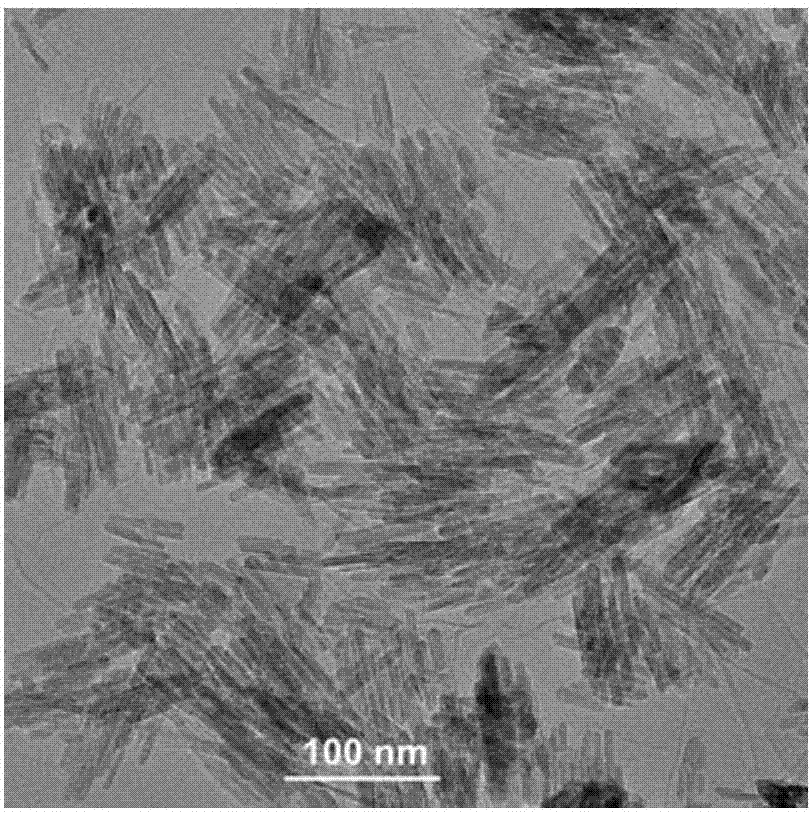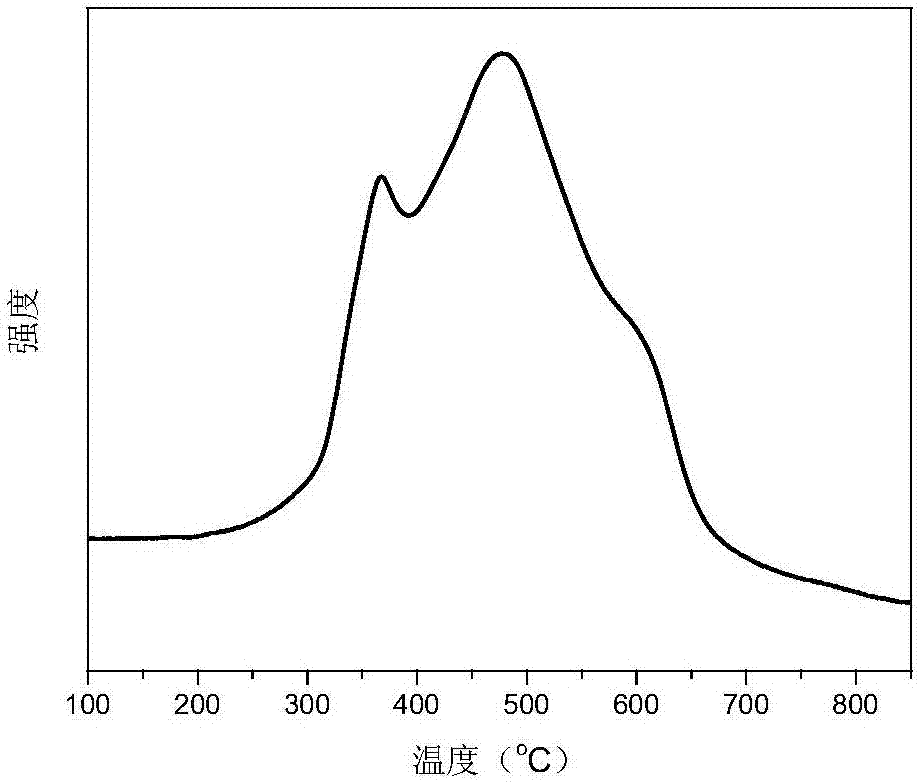Application of porous ferric oxide/graphene oxide nano-composite material to catalysis of Fischer-Tropsch synthesis
A nanocomposite, Fischer-Tropsch synthesis technology, applied in metal/metal oxide/metal hydroxide catalysts, physical/chemical process catalysts, nanotechnology, etc., can solve the problem of large size of metal particles, weak interaction and poor stability and other problems, to achieve the effect of high specific surface, high selectivity and uniform size
- Summary
- Abstract
- Description
- Claims
- Application Information
AI Technical Summary
Problems solved by technology
Method used
Image
Examples
Embodiment 1
[0065] Example 1: Preparation of graphene oxide-supported ultrafine iron oxide nanorod composite catalyst and its Fischer-Tropsch synthesis test
[0066] 1. Dissolve ferrous acetate in deionized water, mix and stir until it is completely dissolved, and obtain an aqueous solution of 0.02mol / L ferrous acetate;
[0067] 2. Add 388ml of the ferrous acetate solution obtained in step 1 dropwise into 435mL, 10mg / mL graphene oxide hydrosol, and stir at the same time to obtain a stable and uniform suspension. Among them, the mass ratio of iron element to graphene is 10:100;
[0068] 3. Pour the suspension obtained in step 2 into a hydrothermal reaction kettle, react at a temperature of 120°C for 12 hours, naturally cool to room temperature, wash with deionized water for 5 times and perform suction filtration to obtain graphene oxide Composite with hydrated iron oxide nanoparticles, and finally dried in a vacuum (0.1Pa) oven at 60°C for 12h. Obtained graphene oxide-supported ultrafine...
Embodiment 2
[0073] Example 2: Preparation of graphene oxide-supported ultrafine iron oxide nanorod composite catalyst and its Fischer-Tropsch synthesis test
[0074] 1. Dissolve ferrous chloride in absolute ethanol, mix and stir until it is completely dissolved, and obtain an ethanol solution of 0.03mol / L ferrous chloride;
[0075] 2. Add 147ml of the iron salt solution obtained in step 1 dropwise into 225mL, 10mg / mL graphene oxide hydrosol, and stir at the same time to obtain a stable and uniform suspension. Among them, the mass ratio of iron element to graphene is 11:100;
[0076] 3. Pour the suspension obtained in step 2 into a hydrothermal reaction kettle, react at a temperature of 130°C for 24 hours, naturally cool to room temperature, wash with deionized water for 5 times and perform suction filtration to obtain graphene oxide Composite with hydrated iron oxide nanoparticles, and finally dried in an oven at 80°C for 12h. Obtained graphene oxide-supported ultrafine iron oxide nanor...
Embodiment 3
[0080]Example 3: Preparation of graphene oxide-supported ultrafine iron oxide nanorod composite catalyst and its Fischer-Tropsch synthesis test
[0081] 1. Dissolve ferrous sulfate in dimethylformamide, mix and stir until it is completely dissolved, and obtain a solution of 0.05mol / L ferrous sulfate;
[0082] 2. Add 289ml of the iron salt solution obtained in step 1 dropwise into 450mL, 10mg / mL graphene oxide hydrosol, and stir at the same time to obtain a stable and uniform suspension. Among them, the mass ratio of iron element to graphene is 18:100;
[0083] 3. Pour the suspension obtained in step 2 into a hydrothermal reaction kettle, react at a temperature of 130°C for 24 hours, naturally cool to room temperature, wash with deionized water for 5 times and perform suction filtration to obtain graphene oxide Composite with hydrated iron oxide nanoparticles, and finally in a quartz tube furnace at 100 °C in CO 2 Dry under atmosphere for 12h. Obtained graphene oxide-support...
PUM
| Property | Measurement | Unit |
|---|---|---|
| Specific surface area | aaaaa | aaaaa |
| Average pore diameter | aaaaa | aaaaa |
| Length | aaaaa | aaaaa |
Abstract
Description
Claims
Application Information
 Login to View More
Login to View More - R&D
- Intellectual Property
- Life Sciences
- Materials
- Tech Scout
- Unparalleled Data Quality
- Higher Quality Content
- 60% Fewer Hallucinations
Browse by: Latest US Patents, China's latest patents, Technical Efficacy Thesaurus, Application Domain, Technology Topic, Popular Technical Reports.
© 2025 PatSnap. All rights reserved.Legal|Privacy policy|Modern Slavery Act Transparency Statement|Sitemap|About US| Contact US: help@patsnap.com



